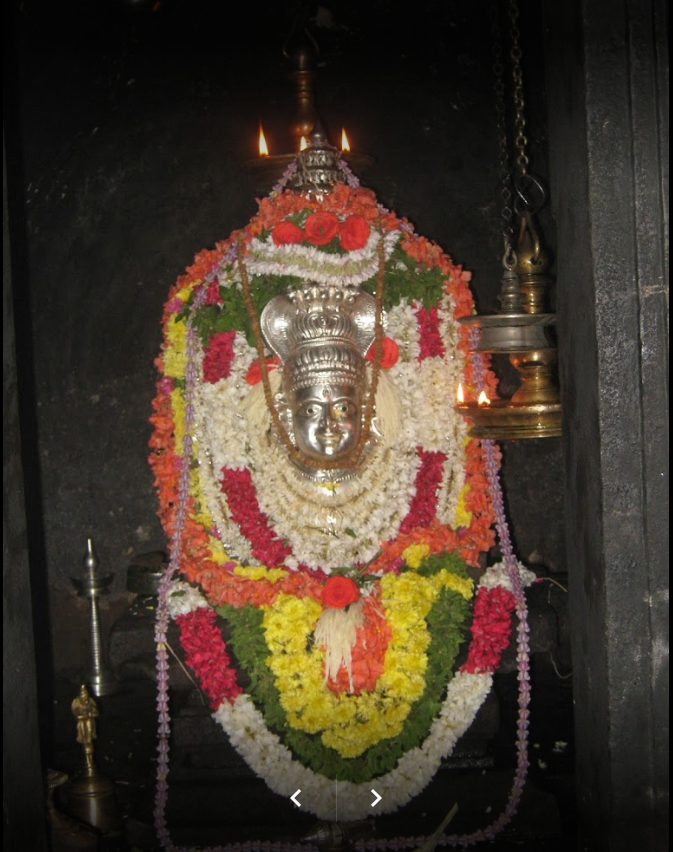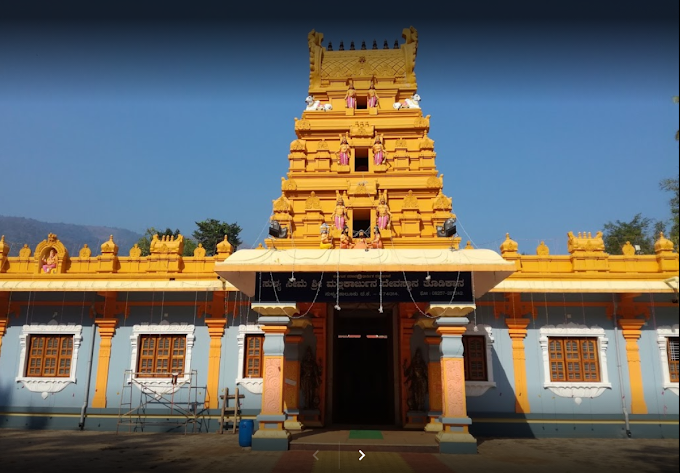Kalika Mata Temple is situated in the Indian state of Gujarat, near Halol, at 762 metres (2,500 ft) above sea level. The temple complex is part of the Champaner-Pavagadh Archaeological Park, a UNESCO World Heritage Site. It is set amidst a dense forest cover on a cliff.
The temple can be accessed by a pathway from the road head through the forest over a distance of 5 kilometres (3.1 mi). The path passes the ruins of Patai Raval's palace ruins. Alternatively, there is a ropeway access, which was commissioned in 1986. The ropeway, 740 metres (2,430 ft) in length, is of mono-cable and can carry 1,200 people per hour; it is said to be the country's highest.
History
Dating from the 10th-11th centuries, Kalika Mata is the oldest temple in the area. According to R. K. Trivedi in Fairs and Festivals of Gujarat (1961), the goddess Kalika Mata was initially worshipped by the local [Lewa Patidar and king / sardar is Sadashiv Patel] , until she was later invoked and installed by Vishvamitra on Pavagadh Hill summit, where she is worshipped as a form of Durga or Chandi.There is a legend associated with this temple, Once during the festival of Navratri, the temple had organised a traditional dance called Garba, where hundreds of devotees got together and danced out of devotion towards the Goddess. Seeing such unconditional devotion, Goddess Mahakali herself came amidst the devotees disguised as a local woman and danced with them. Meanwhile, the king of that kingdom Patai Jaisinh who was also dancing with the devotees happened to see the woman and was enchanted with her beauty. Filled with lust, the King held her hand and made an inappropriate proposal. The Goddess warned him thrice to leave her hand and apologize, but the king was too overwhelmed with lust to understand anything. Thus the Goddess cursed that his empire would fall. Soon a Muslim invader Mahmud Begada invaded the kingdom. Patai Jaisinh lost the battle and was killed by Mahmud Begada. Pavagadh's Kalika Mata is also worshipped by the Adivasi. The temple was described in Gangadas Pratap Vilasa Natakam, a 15th-century drama. Named in honor of the Goddess Kali, the temple is believed to be the Kali Mata's residence, and is one of the Shakti Peethas, as the symbolic toe of the goddess Sati is said to have fallen here.
The small and plain[citation needed] temple is set amidst fortifications with an open yard in the front, and is open for long hours to cater to the rush of pilgrims. There are two altars in front of the temple for offering sacrifices to the Goddess, but any kind of animal sacrifice is strictly banned since almost two to three centuries now. The Kali yantra is worshipped at the temple.
The complex is divided into two parts, the ground floor containing Hindu shrines, while the temple spire is domed with a Muslim shrine. The chief shrine on the ground floor contains three divine images: in the centre Kalika Mata in the centre (depicted in the form of a head, known as mukhwato and red in colour), while Mahakali is situated to her right and Bahuchara Mata to her left. The restored marble floor dates to about 1859 and was presented by the minister of Limbdi in Kathiawar.[citation needed] The domed temple spire contains a Muslim shrine and mausoleum to Sadan Shah Pir, a Sufi saint.















